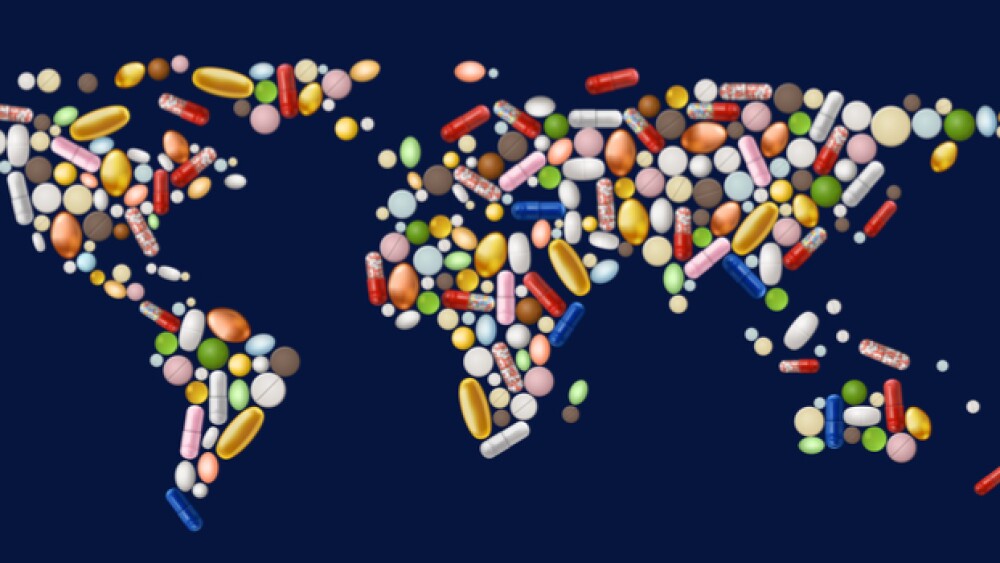There are 7 billion people in the world. Of those, 5 billion have access to life-saving medications, while 2 billion do not. That is a gap that pharmaceutical companies can help close through increased R&D programs, logistical initiatives and the lowering of prices, the Access to Medicine Foundation announced Tuesday.
There are 7 billion people in the world. Of those, 5 billion have access to life-saving medications, while 2 billion do not. That is a gap that pharmaceutical companies can help close through increased R&D programs, logistical initiatives and the lowering of prices, the Access to Medicine Foundation announced Tuesday.
In the foundation’s sixth Access to Medicine Index released Tuesday, the Netherlands-based group pointed out that a handful of pharmaceutical companies are developing the bulk of urgently needed new medicines for the poor. Those drugs are concentrated on five diseases and are made by five companies, the Access to Medicine Foundation said in its 2018 Access to Medicine Index.
The Index is a ranking of 20 top pharmaceutical companies and their efforts to improve access to medicines in low- and middle-income countries. The report shows that the top six companies on its list, GlaxoSmithKline, Novartis, Johnson & Johnson, Merck KGaA, Takeda Pharmaceutical and Sanofi, in that order, account for 63 percent of the priority research and development (R&D) being undertaken. That R&D is focused on five diseases that are of particular importance in the developing world. Half of the R&D activity is aimed at developing therapeutics that target malaria, HIV/AIDS, tuberculosis, Chagas disease and leishmaniasis, a parasitic disease that causes skin sores.
Jayasree K. Iyer, executive director of the Access to Medicine Foundation, said that the short list of pharma companies conducting research into these vital areas of interest to many parts of the world “shows how fragile the situation is.” Iyer said if one of these companies decided to refocus its R&D efforts and exclude programs for these therapeutics, would have a significant impact on the potential to get medicine to some of the world’s poorest people.
“If more companies joined this group that would bring much-needed resilience,” Iyer said in a statement.
One area though where access has been limited for many patients in developing countries is to cancer treatments. The developing countries account for about 65 percent of all cancer deaths, the foundation said. Companies that focus on cancer drugs have largely failed in including access initiatives for oncology programs in their pipelines, the foundation noted. Only about 5 percent of cancer drug candidates include access initiatives. That is compared to about 54 percent of pipeline programs aimed at treating communicable diseases.
The WHO identified 72 cancer medications as essential, with Swiss pharma giant Novartis making the largest proportion of these. About half of those that have an access initiative attached to them, the foundation said.
Danny Edwards, a research lead for the foundation’s Index, said that when society agrees on priorities, that can help to focus the pharmaceutical industry’s efforts into developing treatments for some of the world’s poorest populations. As an example, the foundation pointed to Germany-based Merck KGaA and its development of tests and treatments for schistosomiasis, a water-borne parasitic disease that affects around 252 million people and kills about 280,000 people each year. Merck said it has created partnerships with organizations like WHO to eliminate the disease. As part of its efforts to target this disease, Merck developed Cesol, which is on the WHO list of essential drugs.
Pointing to Merck’s efforts to develop Cesol, as well as cover the logistical costs of delivering the drug to WHO agents across Africa, Edwards said when there is such a call to action, companies will get involved to benefit humanity.
The foundation noted that overall, the pharmaceutical industry has “matured” in its approach to providing access to medicine. Since the 2016 Index, the foundation said three companies have set new or strengthened access strategies and five companies are scaling commercial models that “explicitly view people living in underserved communities as customers.”
While there has been progress, the foundation also pointed out some areas that remain a challenge. The challenges lie around pricing and licensing. As an example, the foundation said licensing deals have provided access to generic versions of HIV drugs, the use of those drugs remains limited to HIV and hepatitis C. The drugs could be used for other indications, the foundation said.
“There have been massive improvements in global health in the past decades, with all major pharmaceutical companies taking action. To close the gaps that remain, a greater diversity of companies must get involved and stay engaged for the long haul.” Iyer said.





